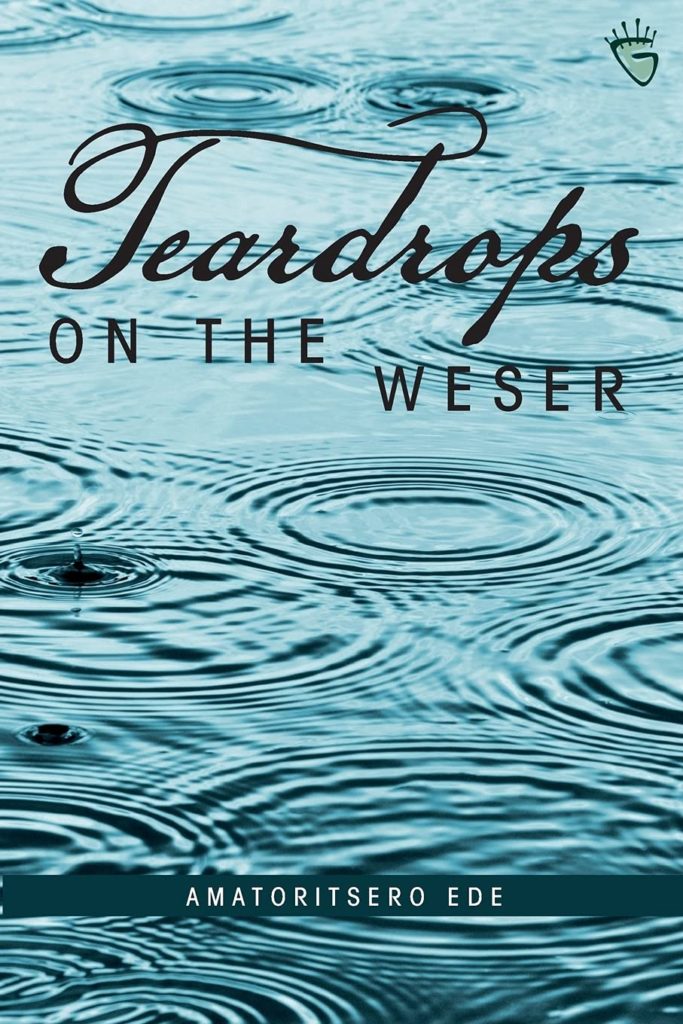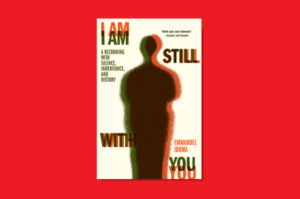
The slimness of a volume of poetry often belies the wealth to be found within, and Amatoritsero Ede’s latest collection, Teardrops on the Weser, is no exception. The main section of the book is a series of 26 poems using the alphabet as titles. The Weser River is described from the perspective of someone observing it from an apartment window. Now a professor at Mount Allison University, Ede was a 2016 writer-in-residence at the University of Bremen, and as the poems develop, his personal challenges morph into a cry against prejudice and injustice, in particular focused on his birthplace, Nigeria.
Rivers are powerful symbols. Time, life, death, nature—a river captures them all. The Weser runs through Bremen on its way to the North Sea, and as Ede watches the river and the city through the window of his apartment, his life in the city and apart from it is made clear: “my picture window is camera lens / bi-cameral / to my pupil.” The lines of the poems are arranged into stanzas of one to three lines, in a meandering formation that mirrors that of a river in its natural state, seeking the lowest ground: “a solid brown vein / snaking / through lower saxony.” Ede’s concrete language becomes reflective as it draws pictures of the riverscape and city, drawing attention to nature and colour, both of which will gain in importance.
The apartment is on the Teerhof, a peninsula in the Weser, and Ede can see over the water to various landmarks. One is St. Martin’s Church, on the Bremen side of the embankment, where Ede can see the promenade with its cafes and crowds, “sun-laved lovers and loiterers / on first of April” who are “throwing away the woolen weight of winter.” But Ede is never part of the gathering, even though the day is still “big with poem / impregnated with / joy.” And eventually St Martin’s and the train and other human-made structures are used to show the destruction that is happening.
Ede moves from the Weser in “v” to the Niger and says the river he sees is “sluggish with memories / of dead water / on the niger river delta.” He moves into a denunciation of the pollution wrought by Shell and its collaborators like Sani Abacha, the Nigerian general responsible for the shocking 1995 execution of Ken Saro-Wiwa, an environmental activist. And then Ede moves to slavery: “that trafficking of black souls / in rotten ship holds / across the cursed atlantic.” It’s not a surprise that poems “x” and “y” mention nazis and Trump respectively, but in the case of “trump” the word is used in Ede’s typical wordplay fashion: “one million strong / is the many-splendored love / that Trump hate.”
Ede mentions great writers such as Rilke and Joyce, but again he takes the alphabet poems to Nigeria near the end of the sequence when he quotes from Chiedu Ezeanah’s “Song of the Musician of the Waters” from The Twilight Trilogy: “‘go water / go rivering / where the eyes that look / becomes a brook . . . . ’” Ede uses “go watering go rivering” as a kind of refrain in the final poem of the sequence, as a tribute to the necessity of water and all the aspects of life that rivers represent. It’s a beautiful series of poems, somber and reflective and, at times, heart-breaking–hence, the teardrops, for both writer and reader.
After the sequence, Ede includes a handful of poems in sections titled “dedication,” “requiem,” and “heartstrings.” And water plays a role. In “Mother and Child,” “a foetus nestles in its watery hammock,” and after being born the child “kicks at the dry iodine air.” In “Harry Fell,” death is envisioned as a fall “to the bottom / of the dry / dark well.” In “One Hundred Red Roses,” blood replaces water in a love poem: may you / clot / in my veins / and dam / this /bleeding.” In the last poem, “Waterfall” Ede shifts again geographically with a brief reference to “niagara falls,” and perhaps that means there will be poems about Canada, where Ede has lived for several years.
Poetry can take work, but it’s a pleasurable activity. The best poems offer room to think and feel. Amatoritero Ede’s Teardrops on the Weser combines the personal and the political to demonstrate their inevitable connection in life—and death. And they do so with subtle and harmonious imagery while displaying breakdowns in connections.
*************
BUY Teardrops on the Weser: Amazon








COMMENTS -
Reader Interactions